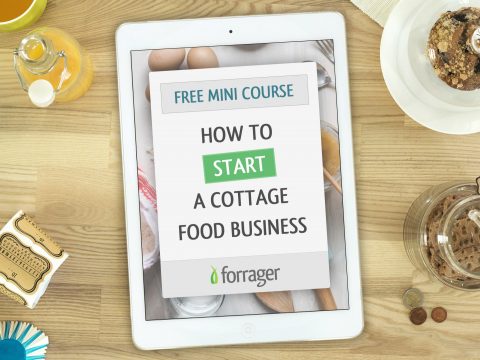District of Columbia Can you legally sell food from home in District of Columbia?
Cottage Food Law
Washington D.C. started allowing homemade food sales in 2013, with the passage of the “Cottage Food Amendment Act of 2013” (B20-0168).
In 2017, the health department added many rules (DCMR Title 25-K), which made it much more complicated and expensive to start a cottage food business.
In 2020, the law significantly improved via two amendments. In March 2020, the “Cottage Food Expansion Amendment Act of 2019” (B23-0192) allowed all direct sales, removed the sales limit, and changed the inspection requirements. Then, in July 2020, the “Health Care Reporting Amendment Act of 2019” (B23-0269) allowed online and retail sales.
Cottage food businesses can now sell most types of non-perishable homemade foods within the DC area at almost any venue, including retail stores and online sales.
To become a cottage food business, producers need to register with the health department, take a food safety manager course, and get a home occupation permit.
Selling Where can you sell homemade food products?
You must display your Cottage Food Business Registration Certificate at events.
Prior to 2020, sales were only allowed at farmers markets and public events.
Allowed Foods What food products can you sell from home?
If you want to sell donuts, they must be unfilled.
If you want to sell honey, you must comply with “Sustainable Urban Agriculture Apiculture Act of 2012”, and provide proof they you registered with the District’s Department of Energy and Environment in accordance with Subtitle B of the Act, “Promoting Urban Agriculture through Beekeeping”.
If you want to produce a product that is not on the approved food list, you can ask the health department to review your product and recipe to determine if they will allow it. To do this, you must get your product(s) tested in an approved lab.
Limitations How will your home food business be restricted?
Prior to 2020, sales were limited to $25,000 per year.
Business What do you need to do to sell food from home?
Before selling any products, you must register your business with the health department.
Registration costs $50 and is valid for 2 years.
To register, you need to mail a completed application to the health department.
You must get a Home Occupation Permit from the Department of Consumer and Regulatory Affairs (DCRA).
You must take an approved food manager training course, such as Learn2Serve’s Food Manager Training & Certification, which costs $69.
Your food safety certification is valid for 3 years.
Please note that a basic food handler course is not sufficient.
After completing the food safety manager training and passing the exam, you must apply for a Certified Food Protection Manager ID card, which costs $35.
Your ID card is valid for 3 years.
When you register with the health department, you must list each product you intend to sell.
You must also submit a sample label for each of your products.
The health department may request copies of your recipes, but they are not required to do so.
After your business is registered and approved, the health department may inspect your home & kitchen, but they are not required to do so.
If you sell products by weight, your scale must be registered with the Office of Weights & Measures.
If the product you want to sell is neither on the allowed list (DCMR 25-K 103.5) nor prohibited list (DCMR 25-K 105 & 106), and you think it is a non-perishable food, the health department will consider allowing you to sell it.
To get the health department to review your product, you must get it tested in a state accredited lab for pH level and water activity.
Labeling How do you label cottage food products?
Chocolate Chip Cookies
"Made by a cottage food business that is not subject to the District of Columbia's food safety regulations." (10-point type)
Permit #: 12345
Ingredients: enriched flour (wheat flour, malted barley flour, niacin, iron, thiamin mononitrate, riboflavin, folic acid), butter (cream, salt), semi-sweet chocolate (sugar, chocolate, cocoa butter, milkfat, soy lecithin, natural flavors), brown sugar, granulated sugar, eggs, vanilla extract (vanilla bean extract, alcohol, sugar), baking soda, salt (salt, calcium silicate)
Contains: milk, eggs, wheat, soy
NET WT 2 lb 4 oz (1.02 kg)
You must include your cottage food business identification number on the label.
You cannot use reduced oxygen packaging (like vacuum sealing) for your products.
Workplace Are there any home kitchen requirements?
You must store your business ingredients separately from those for personal or family use.
Many other kitchen and workplace requirements are listed in DCMR 25-K 108.8 & 109
Resources Where can you find more information about this law?
- Department
- Food Safety
- food.safety@dc.gov
- Telephone
- 202-535-2180
- Fax
- 202-535-1359
- Address
- 899 North Capitol Street NE
Washington, DC 20002
Department of Health
- January 2014
- B20-0168 - Cottage Food Act of 2013
- December 2017
- DCMR Title 25-K
- March 2020
- B23-0192 - Cottage Food Expansion Amendment Act of 2019
- July 2020
- B23-0269 - Health Care Reporting Amendment Act of 2019
